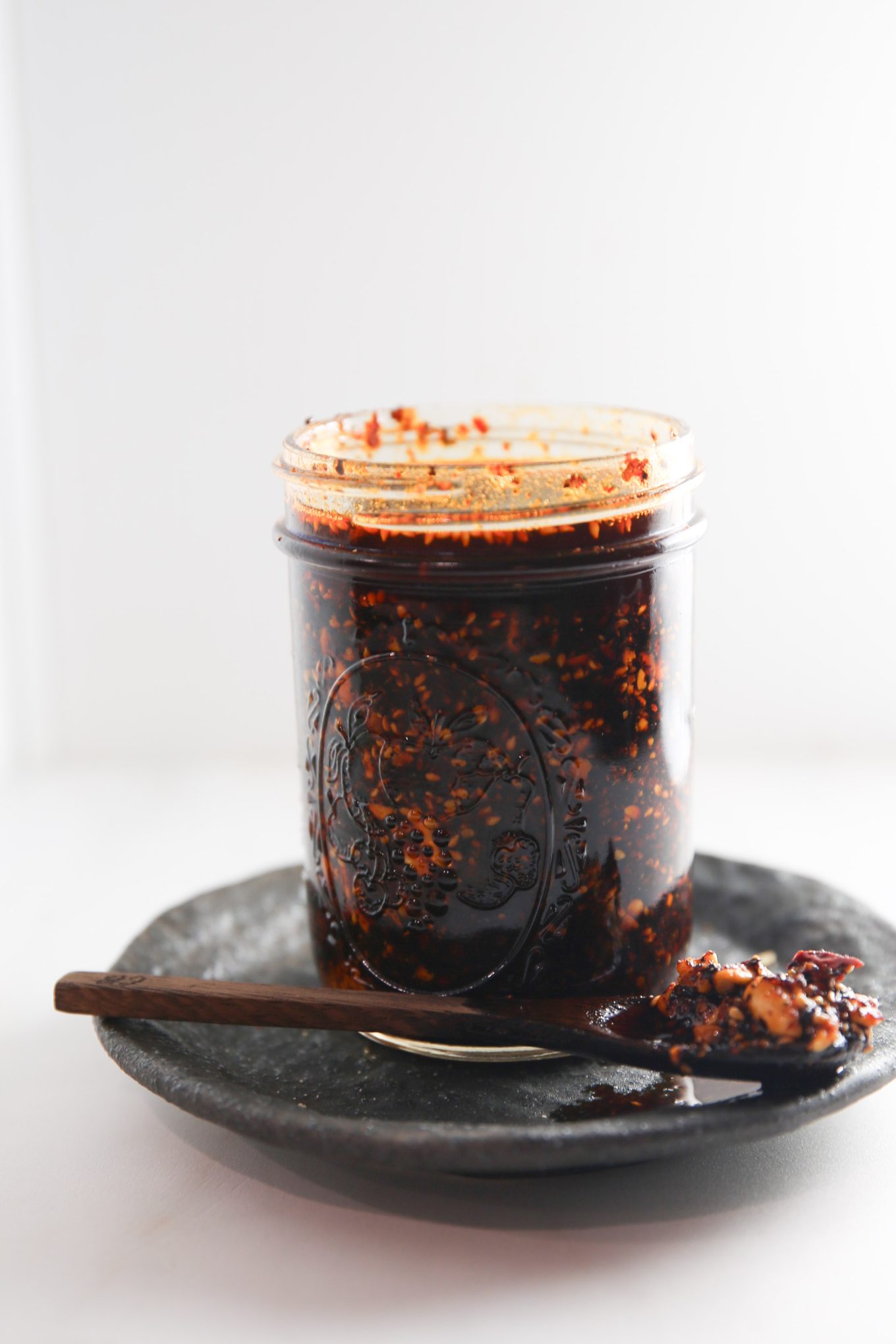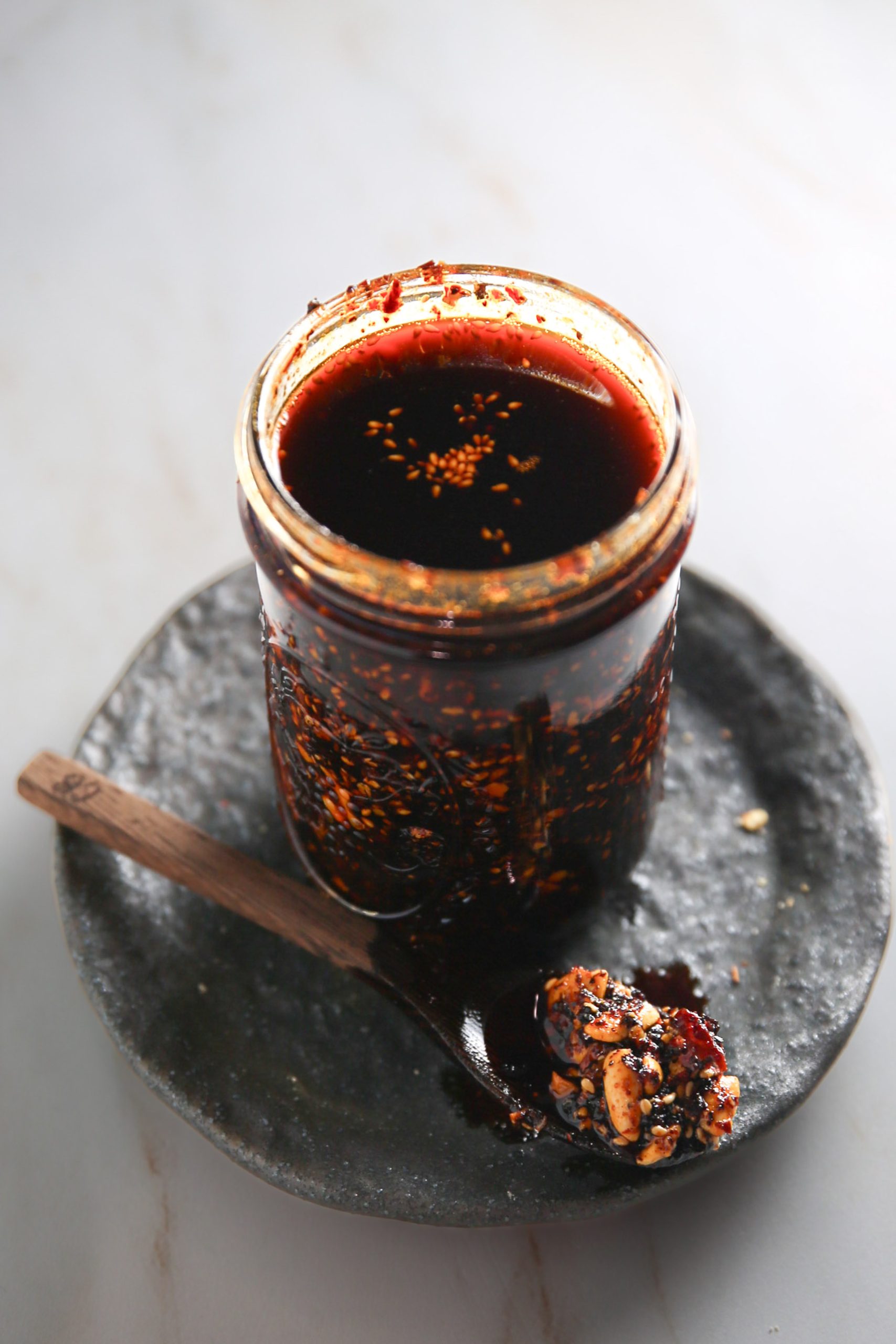
About this recipe
While many Mexican families have their salsa macha recipe, I want to share my version with you. This recipe is easy to make, requires minimal preparation, and uses fewer dishes. I do have to warn you that this is not the traditional way of making it; it is a modern version. The only thing you need to keep in mind is that you have to be SUPER CAREFUL TO MAKE THIS SALSA.
What is Salsa Macha?
Before diving into the recipe, let’s talk about salsa macha. Originating in Mexico, salsa macha is a unique, oil-based salsa known for its blend of dried chilies, nuts, and seeds. It’s versatile, flavorful, and, unlike your typical salsa, it has a crunch!
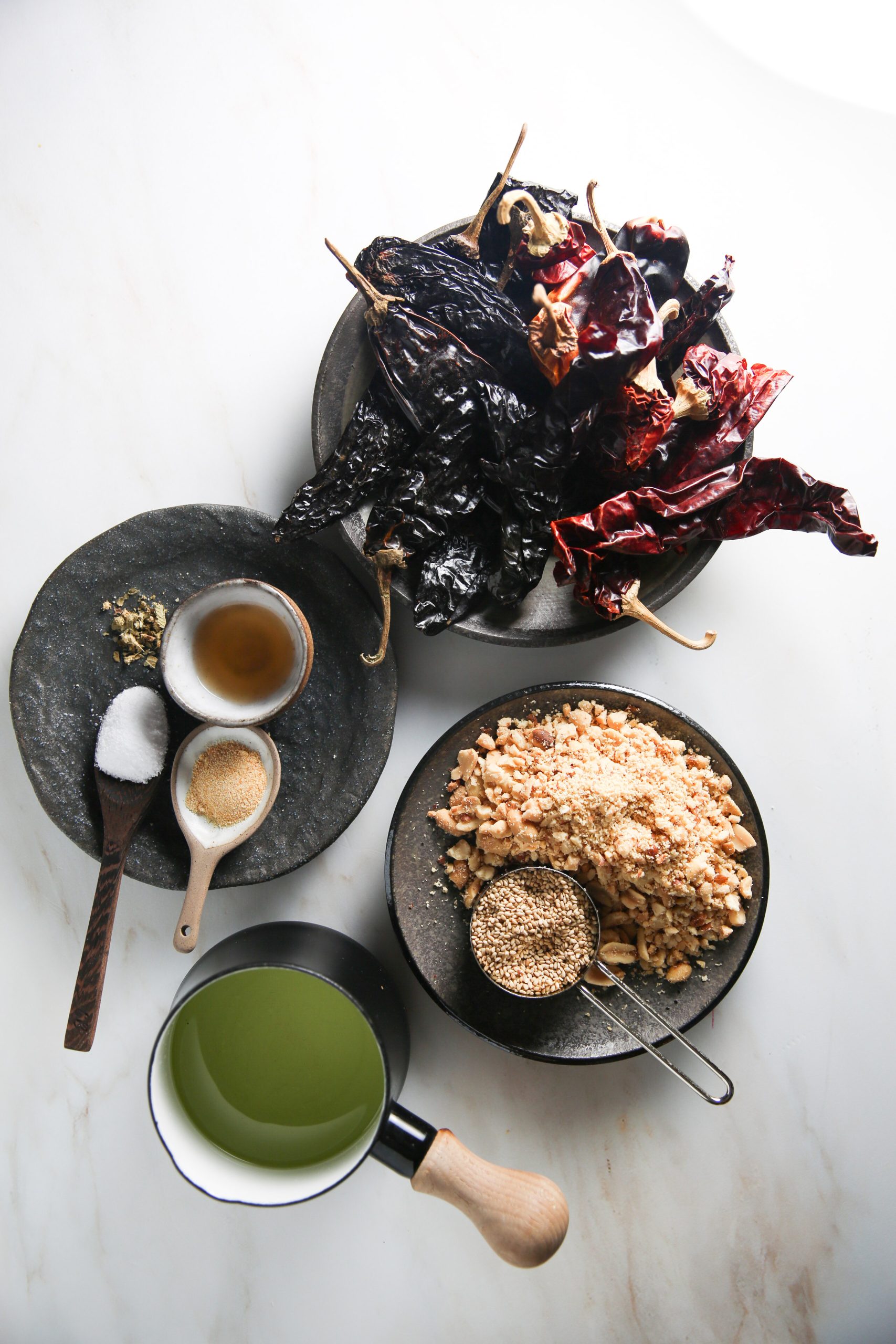
Ingredients for salsa macha
- Peanuts and sesame seeds. Use unsalted, unroasted peanuts and sesame seeds to control saltiness and flavor.
- Guajillo and pasilla chiles. Guajillo peppers add a mild, fruity flavor and vibrant color. Pasilla peppers bring a smoky, slightly spicy depth with hints of raisin and chocolate. Substitute pasilla with ancho chilies if needed.
- Garlic powder, oregano, and salt. Traditional salsa macha uses fried garlic, but this quick version relies on garlic powder for ease.
- Vinegar and oil. A splash of white vinegar or apple cider vinegar enhances the flavors. Choose a high-smoke-point oil like avocado, refined peanut, or grapeseed for the best results.

How to Choose the Best Oil for Salsa Macha
- Stability: Oils rich in monounsaturated fats last longer.
- High Smoke Point: Opt for oils above 400°F (204°C).
- Check Labels: Look for “high heat” or “suitable for frying.”
- Refined Oils: These have higher smoke points and longer shelf lives.
- Neutral Flavor: Avocado, grapeseed, or refined peanut oil won’t overpower your salsa.
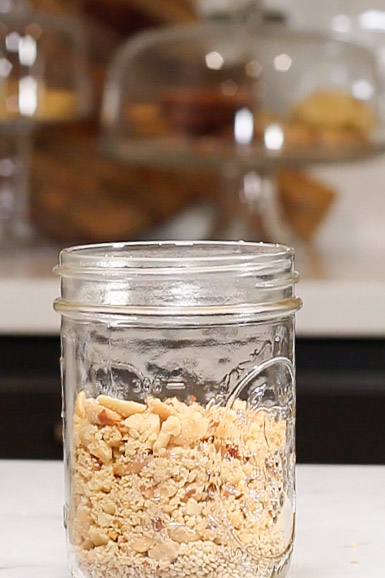
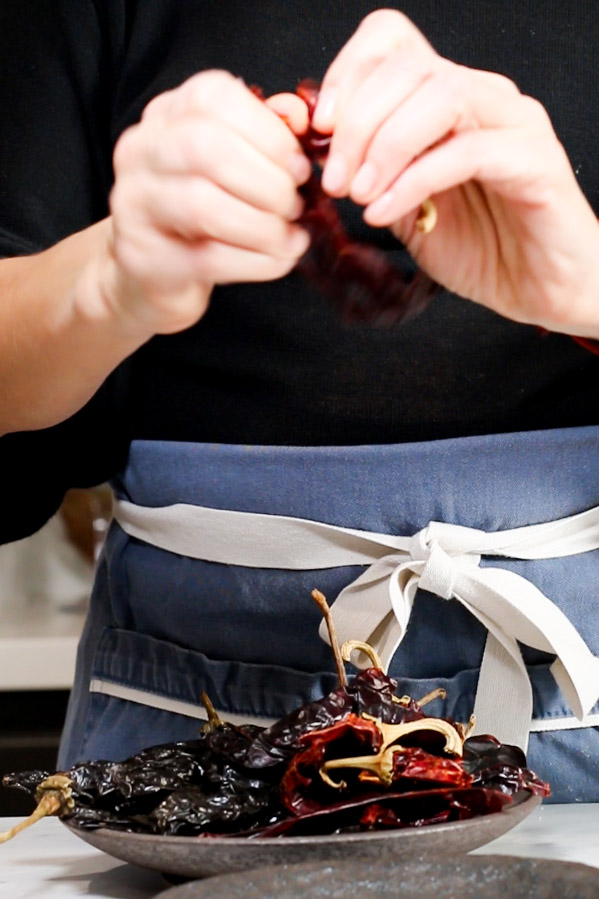
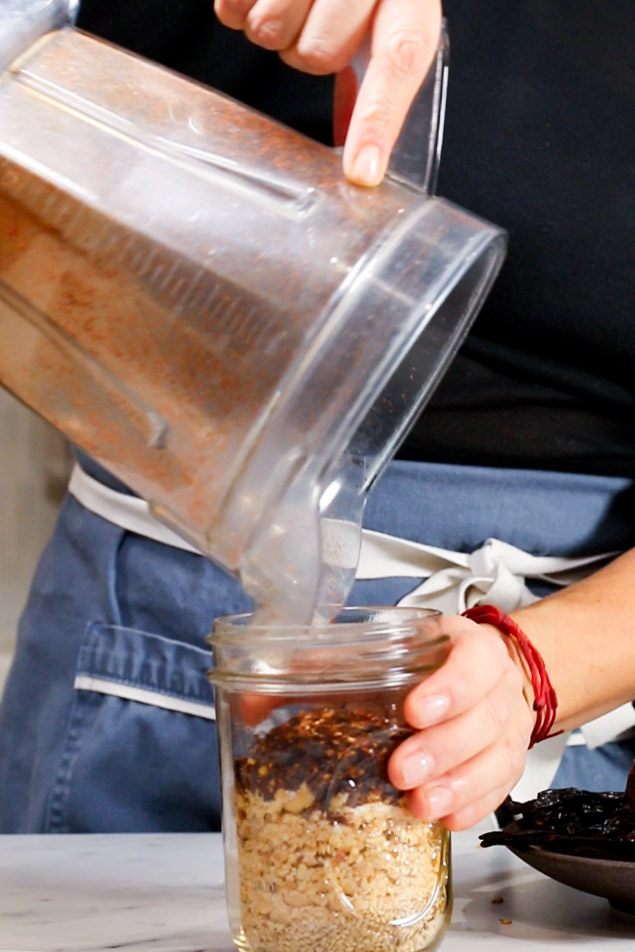
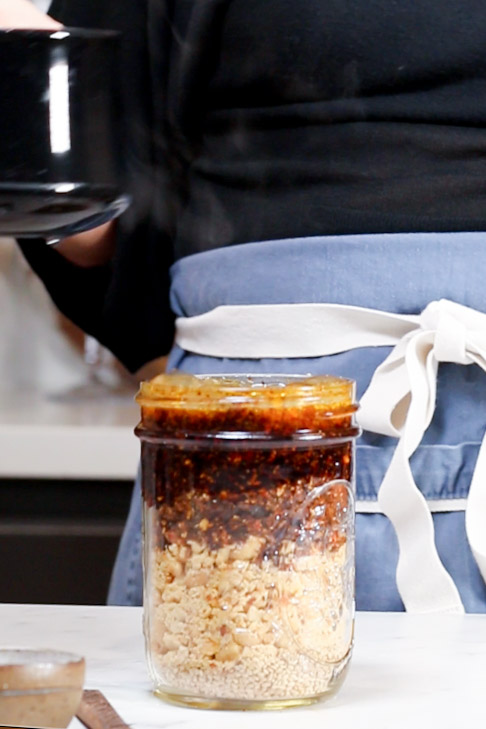
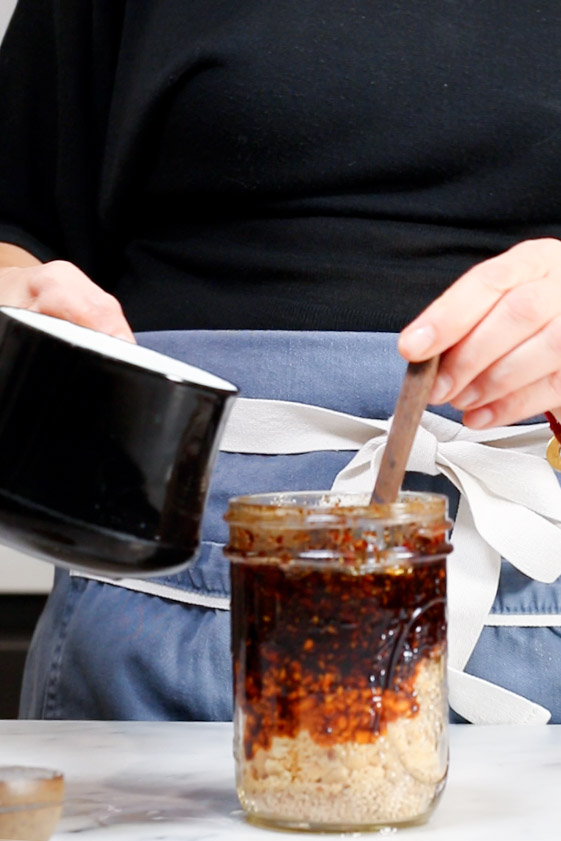
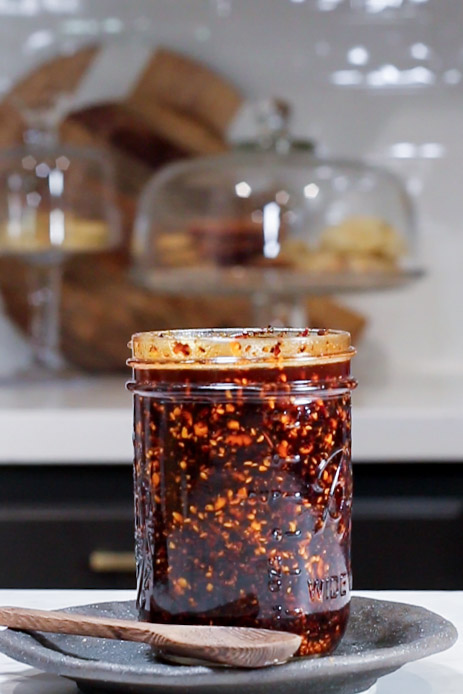
How to make easy salsa macha
- Chop Nuts and Seeds: Pulse peanuts and sesame seeds in a food processor until roughly chopped. Transfer to a heatproof bowl.
- Prepare Chilies: Remove stems, then blend chilies until finely chopped.
- Combine Dry Ingredients: Add chilies, salt, oregano, and garlic powder to the nuts.
- Add Vinegar: Mix well.
- Heat Oil: Bring oil to a simmer, then carefully pour over the mixture.
- Cool and Store: Let cool, adjust seasoning, and store in an airtight jar in the fridge.

salsa macha, quick notes
Ingredients and Texture: Salsa Macha typically contains dried chilies, garlic, oil, and nuts or seeds (like peanuts or sesame seeds). Unlike traditional Mexican salsas, which are often fresh and chunky, Salsa Macha has a more oil-based, chunky-to-crumbly texture. It’s not pureed smoothly but has consistency, where you can identify small bits of the ingredients.
Flavor Profile: The flavor of Salsa Macha is deep and nuanced. It has a smoky taste from the dried chilies, a nutty undertone from the seeds or nuts, and a subtle warmth from the garlic. It’s not typically very spicy; it’s more about the depth of flavors. The oil used in the salsa absorbs all these flavors, becoming a carrier of the rich, complex taste.
Versatility in Cuisine: Salsa Macha is highly versatile. It can be used as a condiment for tacos, tostadas, or even as a topping for vegetables. It’s also great for adding flavor to soups or stews. The oil-based nature of the salsa allows it to blend well with many dishes.
Cultural Significance: Originating from Veracruz, Mexico, Salsa Macha represents a blend of indigenous and Spanish influences, characteristic of Mexican cuisine. Its popularity has spread throughout Mexico and beyond, gaining a following among those who appreciate its rich, complex flavors.
How to Use Your Spicy Peanut Salsa
- Tacos and Tostadas: Add a spicy crunch.
- Marinade: Coat proteins for bold flavor.
- Dip: Serve with chips or veggies.
- Soups and Stews: Stir in for extra depth.
Homemade Peanut Salsa Macha Tips
- Adjust the amount of chilies based on your heat preference. If you want a spicier salsa macha, add two or three chiles de árbol to the mix.
- Use high-quality vegetable oil for the best flavor.
- Letting the salsa sit for a bit after making it helps enhance the flavors.
- Store it properly: Salsa macha can last for several weeks if stored in an airtight container in the refrigerator. Just make sure to stir it well before using it.
- Mix it with butter or mayo, and you’ll have the best spread.
- Some salsa macha variations include one with different nuts, my Hibiscus Salsa Macha, or my Salsa Macha Verde recipe made with fresh chiles.
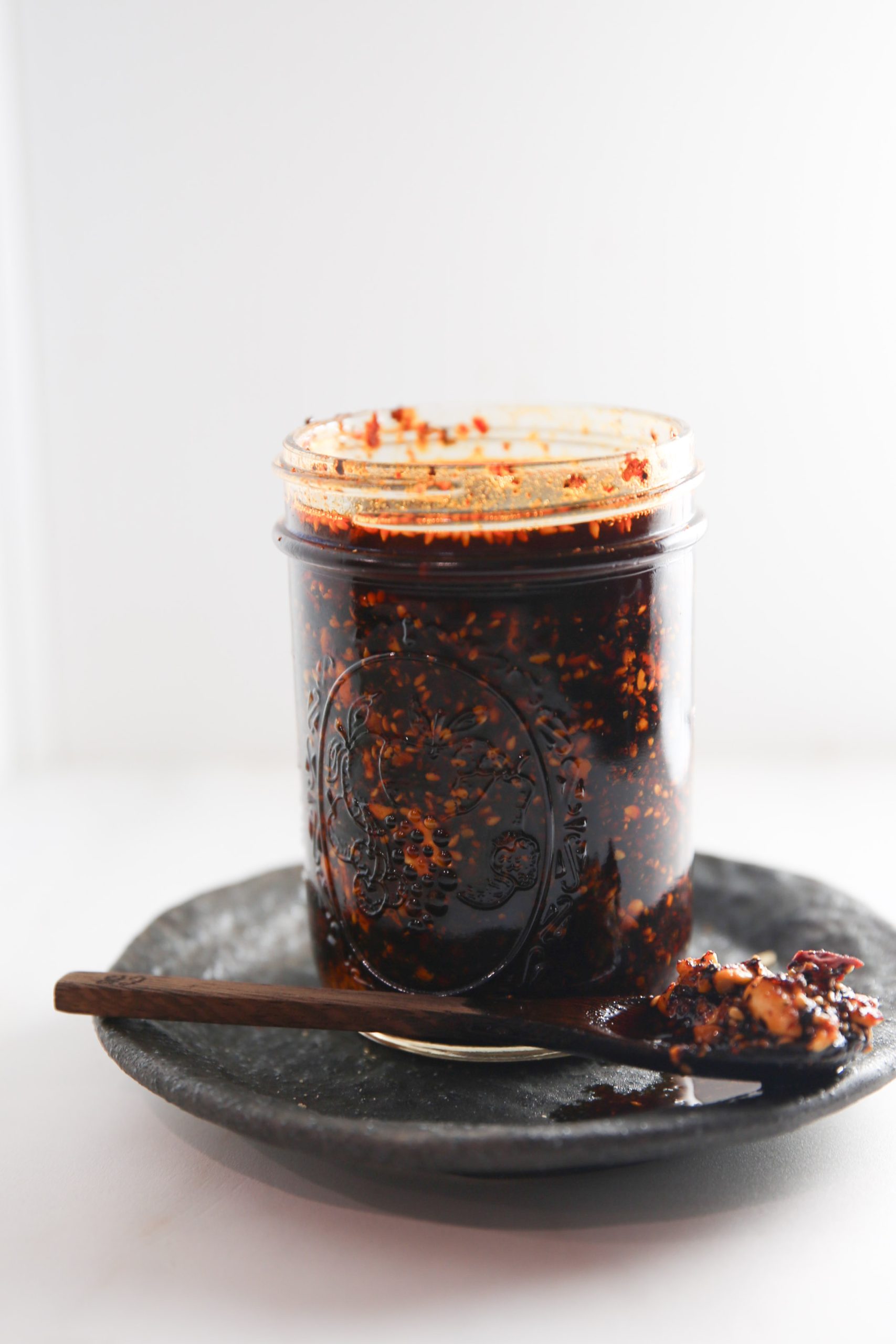
Easy Peanut Salsa Macha Recipe
Equipment
- High Speed blender or Food Processor
Ingredients
- ¾ cup chopped peanuts
- ¼ cup sesame seeds
- 6 chiles guajillo
- 6 chiles pasilla
- 1 teaspoon garlic powder
- 2 teaspoons kosher salt (1 teaspoon sea salt)
- 1 tablespoon apple cider vinegar
- 1 teaspoon Mexican oregano
- 1 cup vegetable oil (add ½ cup if you like a more oil based salsa)
Instructions
- Using a food processor or high-speed blender, roughly chop the peanuts and add them to a large jar, glass, or stainless steel bowl with the sesame seeds.
- To begin, start by removing the stems from the dried chiles and discarding them. Next, take a high-speed blender or food processor and place the chiles in its container. For best results, it is recommended that you blend the chiles in batches, rather than all at once. Turn on the blender or food processor and blend the chiles until they are very finely chopped and almost pulverized. This may take a few minutes, depending on the strength of your blender or food processor.
- Add the salt, oregano, and dried garlic to the nuts and dried chiles mixture. Mix well, add the vinegar, and set it aside. Heat the oil in a stainless steel saucepan until it begins to simmer. Turn off the heat and very carefully pour the hot oil over the nuts and chiles mixture.
- Allow the oil to cool for 10-15 minutes until it is safe to handle. Taste and adjust seasoning if necessary. Store in a tightly closed jar in the fridge.
Notes
Nutrition
information
Nutritional information of this recipe is only an estimate, the accuracy for any recipe on this site is not guaranteed.
